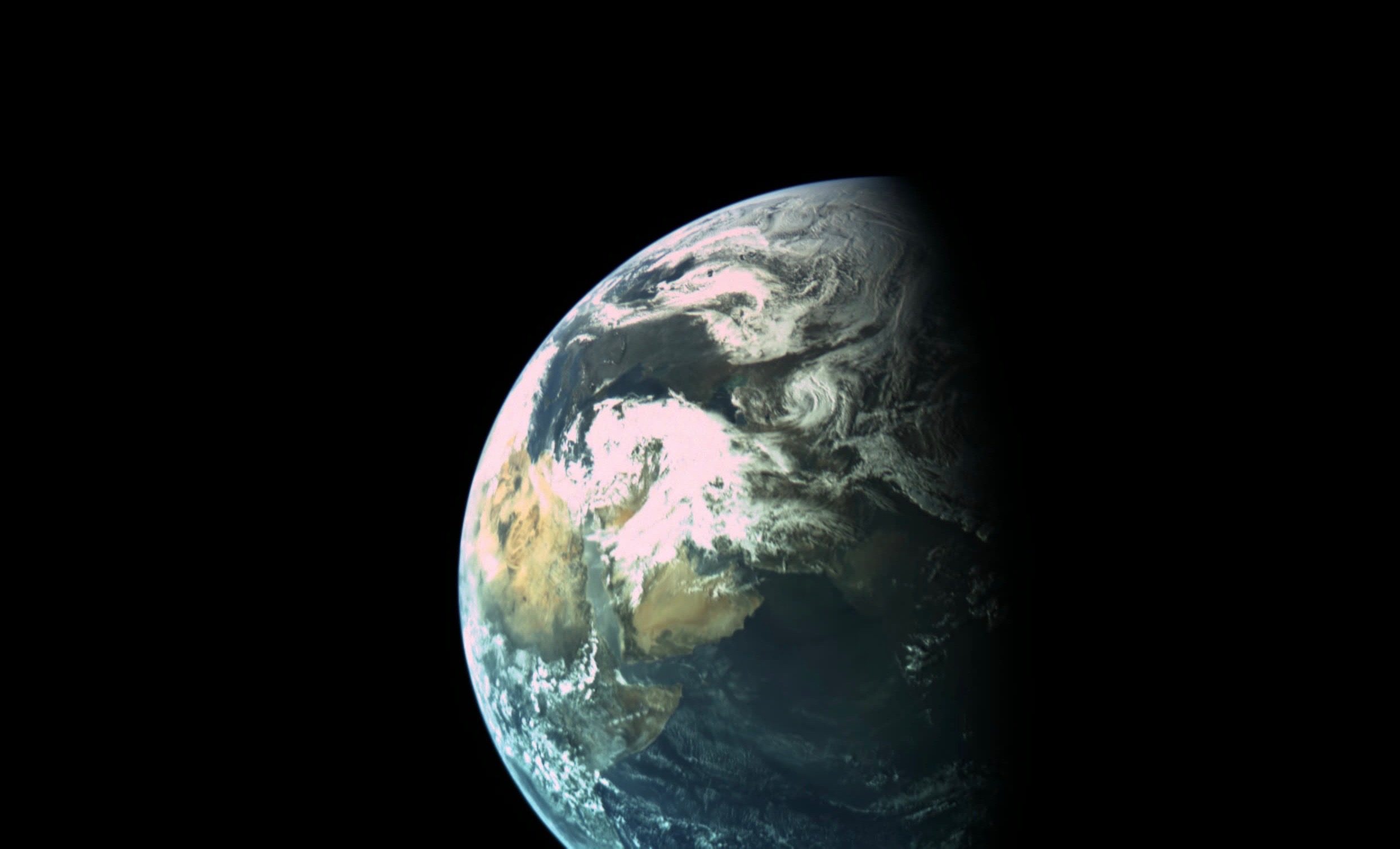
Israel's Beresheet lunar lander has almost made it to the moon.
The 5-foot-tall (1.5 meters) Beresheet fired its engines for a little over a minute early this morning (April 1), altering its trajectory slightly to prepare for a planned capture into lunar orbit on Thursday (April 4).
If all goes according to plan, the robotic lander will touch down on the moon one week later, on April 11. That will be a huge milestone. To date, the only organizations to pull off a soft lunar landing are superpower governments — the Soviet Union, the United States and China.
Related: Israel's 1st Moon Lander Beresheet in Pictures
Beresheet, meanwhile, is a private effort run by the nonprofit SpaceIL and the company Israel Aerospace Industries. SpaceIL formed in 2011 to compete in the Google Lunar X Prize (GLXP), a $30 million competition that asked privately funded teams to land a spacecraft on the moon and have it perform a few basic tasks.
The GLXP ended last year without a winner, but SpaceIL and some other teams kept working on their moon landers.
Beresheet, whose name means "in the beginning" in Hebrew, launched into Earth orbit atop a SpaceX Falcon 9 rocket on Feb. 21. Since then, the spacecraft has performed a series of orbit-raising maneuvers to get closer and closer to the moon.
Get the Space.com Newsletter
Breaking space news, the latest updates on rocket launches, skywatching events and more!
This morning's 72-second-long burn helped make some "final adjustments" ahead of capture into lunar orbit, mission team members said in an update this morning. It's unclear if any further such tweaks will be needed.
"The teams are assessing the results to determine if another alignment will be required before Beresheet enters the lunar orbit this Thursday," project team members said.
Beresheet made its last close approach to Earth yesterday (March 31), zooming within 1,056 miles (1,700 kilometers) of our planet, they added. The lander snapped a gorgeous photo to commemorate this passage, capturing Earth from a distance of about 9,940 miles (16,000 km).
The image shows the Arabian peninsula and southeastern Africa; thick clouds cover Israel, Beresheet team members said in today's update.
Beresheet will perform some science work at and around the moon. For example, the lander will measure local lunar magnetic fields, and it's toting a small laser-reflector array for NASA to help prove out technology that could enable more precise landings on the moon and other bodies in the future.
Beresheet is also carrying a "lunar library" to help safeguard slices of human history and culture. But the main mission goals are to advance Israel's spaceflight program and to inspire young people to care more about science, technology, engineering and math.
Beresheet's total mission cost, including launch, is about $100 million, team members have said.
- Israel's 1st Moon Lander: The SpaceIL Beresheet Lunar Mission in Pictures
- Why It'll Take Israel's Lunar Lander 8 Weeks to Get to the Moon
- Israeli Moon Lander Snaps Epic Space Selfie with a Full Earth
Mike Wall's book about the search for alien life, "Out There" (Grand Central Publishing, 2018; illustrated by Karl Tate), is out now. Follow him on Twitter @michaeldwall. Follow us on Twitter @Spacedotcom or Facebook.
Join our Space Forums to keep talking space on the latest missions, night sky and more! And if you have a news tip, correction or comment, let us know at: community@space.com.

Michael Wall is a Senior Space Writer with Space.com and joined the team in 2010. He primarily covers exoplanets, spaceflight and military space, but has been known to dabble in the space art beat. His book about the search for alien life, "Out There," was published on Nov. 13, 2018. Before becoming a science writer, Michael worked as a herpetologist and wildlife biologist. He has a Ph.D. in evolutionary biology from the University of Sydney, Australia, a bachelor's degree from the University of Arizona, and a graduate certificate in science writing from the University of California, Santa Cruz. To find out what his latest project is, you can follow Michael on Twitter.








